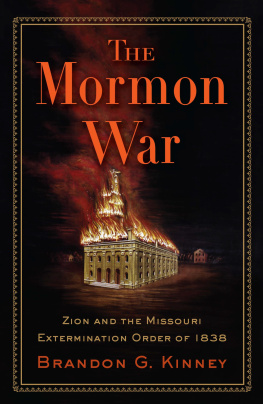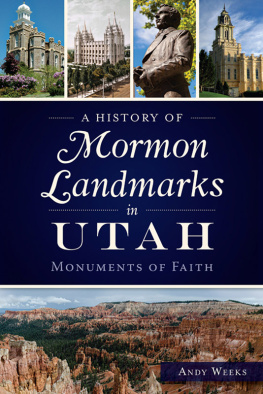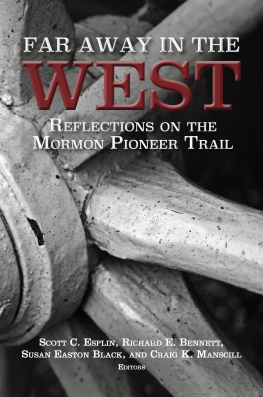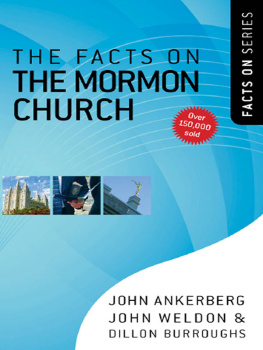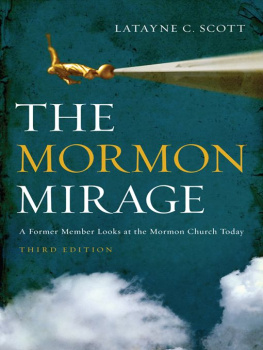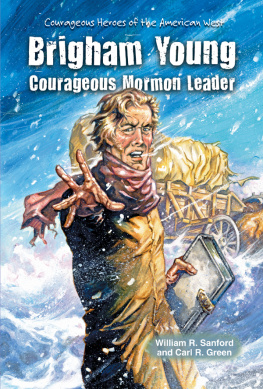Life and Times of
JOHN PIERCE
HAWLEY
A Mormon Ulysses of
the American West
Melvin C. Johnson
Greg Kofford Books
Salt Lake City, 2019
Copyright 2019 Melvin C. Johnson
Cover design copyright 2019 Greg Kofford Books, Inc.
Cover design by Loyd Isao Ericson
Published in the USA.
All rights reserved. No part of this volume may be reproduced in any form without written permission from the publisher, Greg Kofford Books. The views expressed herein are the responsibility of the author and do not necessarily represent the position of Greg Kofford Books.
ISBN 978-1-58958-764-9 (paperback); 978-1-58958-765-6 (hardcover)
Greg Kofford Books
P. O. Box 1362
Draper, UT 84020
www.gregkofford.com
facebook.com/gkbooks
twitter.com/gkbooks
Preface
History and baseball are my passions and have counseled me through the years. The first may describe the story of a person: his people, his tribe; and the myth and action of the second offer a window into American culture. John Pierce Hawleys forty-year odyssey in the American interior was in pursuit of his dream to find a true Mormon restoration faith. The story describes John Pierce Hawley and Mormonism, particularly the Latter-day Saints and the Wightites, and their cultural and geographic landscapes as the multitude of sects compete one with the other for converts and land. This story finishes in 1870 as John Pierce Hawley finds his final place in theological Mormonism, as the Mormon Diaspora has been permanently situated in the American landscape from the upper Midwest to the Rocky Mountains. During his odyssey, John has recorded his own myth and rationale for his lifes religious journey in his writings.
As a Latter-day Saint convert from California, I knew very little about western Mormonism when I entered Dixie College in St. George, Utah. Dixie was then a two-year school, a very small world of academia, and Professor Pansy L. Hardy was my first professional mentor. She took kindly to me and guided me academically. I grew to love her, as so many of her students would over the years. She instilled in me a love for the English language. She also introduced me to an older cousin named Juanita L. Brooks. I had no idea who she was. I did think she was old. Now I am almost the age she was then. I had no idea where Mountain Meadows was located or what had occurred there, although the killing fields were but some thirty miles north of St. George. A friend from college took me fishing at the reservoir in Pine Valley. I thought the little hamlet quaint as I did the house on the southeast corner of the burgs main intersection. I was not aware that George Hawley, a brother of John Pierce Hawley, had built it, or that George had three wives, or that John would struggle with plural marriage for decades before rejecting it and Utah Mormonism. Hawley took his large family away from Pine Valley, and George and his family as well, to Iowa and RLDS Mormonism (Reorganized Church of Latter Day Saints of Jesus Christ, now called Community of Christ) in 1870.
After Dixie College, my four years at Utah State University found a much larger academic domain and new mentors: Ty Booth, Dean Skabelund, the great folklorists Austin E. and Alta S. Fife, Hector B. Lee, and Barre Tolkien. Gary Snyder convinced me I should never, ever consider being a poet. They all taught me about a larger world beyond Dixie and Logan and Utah. Twelve years followed in the United States Army. During those years I played baseball and softball, read a lot, and finally felt the need for graduate school in Nacogdoches, Texas. I earned graduate degrees in English and history at Stephen F. Austin State University. Archie L. McDonald mentored and guided me and helped me get my first professional history job with the Texas Forestry Museum at Lufkin, Texas. Carol Riggs, its director, was kind and generous, allowing me to develop the milltown and logging tram database research projects founded by Jon L. Gerland, now senior archivist of the Temple History Center in Diboll, Texas.
The database projects allowed me to unknowingly cross paths with John Pierce Hawley. The Mormon millers in the Hill County in pre-Civil War Texas became at first an intriguing side note in the museums database collection. However, the Mormon millers narrative fanned my need to know more. I read and researched and began writing. My fascination with Lyman Wight and his schismatic runaway Mormon colony from Wisconsin to Texas led to a series of papers and finally the work and publication of Polygamy on the Pedernales: Lyman Wight's Mormon Villages in Antebellum Texas, 18451858 in 2006, published by Utah State University Press. That work featured at times John Pierce Hawley (18261909), whose personality and character fascinate me. His fluidity and interchangeability within the sectarianism and denominationalism that have dominated Restoration groups from 1845 until now have intrigued me. Just as importantly, John R. Alley, my editor at USU Press for the Wight book, taught me how to be a writer of history, and became my lifelong friend.
This book would not have happened without the dedication and friendship of John Alley and Brian Whitney. Will Bagley, my oldest friend from early days in Carlsbad and Oceanside, California, has inspired me, analyzed my work, and supported me in tough times, as I hope I have for him. Susan Louise Petty, the mother of my children and now long for the ages, always told me that my greatest challenge was to be honest with yourself and to the work I do. Time has proven her right. Art, Ben, Amber, and Julie, now with her mom, has their mothers glow. They are my heroes. Bill Shepherd, Mike Marquardt, Paul Reeve, Todd Compton, Joseph Johnstun, Chris Smith, Chris Blythe, Bill Russell, Ron Romig, Lach Mackay, Steve Snow, Larry Morse, Rick Turley, and many others have contributed to forming, guiding, and encouraging the direction of my historical pursuits. Jenny Lund and Jen Barkdull at the LDS Church History Library have taken notice of my needs and provided critical assistance. Most of all, Halli Wren Johnson has supported me, listened to me, traveled with me, and never once have her eyes glazed over; she always has spoken the needed words when deserving, Well done, Mel. She has been my Liahona, my guide to my true path, without whom I would have lost my way a long time ago.
All errors and mistakes in this work are, of course, my sole responsibility.
Prologue
The Start of a Trek
the most important reason of all that [biography] is an impossible craft is that you cannot know what someone elses life was like.
Life and Times of John Pierce Hawley: A Mormon Ulysses of the American West fits within the latter day religious movement of Joseph Smith Jr. That is where John defined his identity. The more I researched Lyman Wight and his colonies in Wisconsin and Texas, the more the Pierce Hawley family story and that of John Pierce Hawley emerged from the Wightite story. I became intrigued by John P. Hawley. His record in the West and his interaction with major sects of Mormonism rival that of Bishop George Miller and Zenas Hovey Gurley Sr. Hawley exemplified ordinary peoples struggles of the Mormons in the nineteenth century. Although he had his secrets and did not easily share them, I believe I have uncovered most of them.
A biographer wants to tell the whole story and clarify the narratives important details. And most importantly, he or she must accept that one cannot know completely what someone elses life was like. The historian can only hope to come close. Because biography is an art, conclusions will be imprecise. Gathering data is critical. Just as important is that the quality of this type of research and writings develops with the laborers growing skill over the decades in appraising the data and interpreting the story. The historian should quarry all evidence, no matter how contrary or opposed or kindly or reassuring, and fairly assess it. Not all the evidence, most likely, will be found about a complex subject. Thus, the writers objective professionalism and experience and talent can only mitigate the inexactness of biography.
Next page

